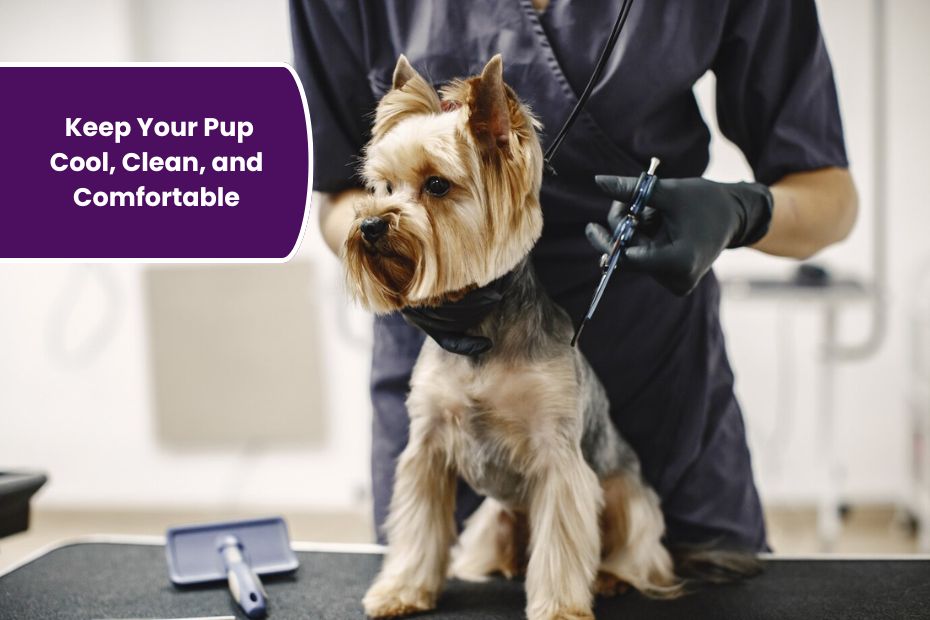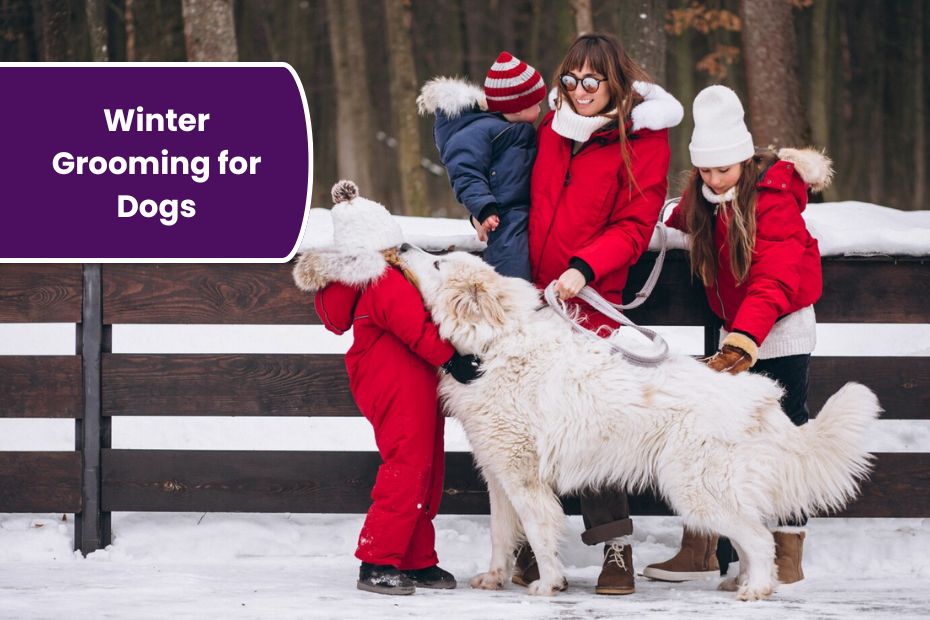Among the most underappreciated but necessary grooming chores for dogs is nail cutting. Although pet owners are usually conscientious about feeding, bathing, and frequent veterinarian appointments, nail care sometimes suffers. For dogs of all shapes and sizes, just little neglect can cause major behavioral and health problems. Regular nail trimming for a dog guarantees correct posture, helps to avoid pain and injuries, not only about appearance.
Long nails can change a dog’s movement, strain their joints, cause painful splits or infections. Under extreme conditions, enlarged nails can even curve into the paw pad and inflict major damage. Knowing the value of nail care helps owners of dogs maintain their animal friends healthy and content. We discuss in this post the main causes of nail cutting, the dangers of skipping it, and useful tips to get it right. Let’s explore why, for dogs everywhere, nail clipping is absolutely vital.
The Hidden Dangers of Overgrown Dog Nails
Dogs with overgrown nails pose actual hazards to their general well-being, not only a cosmetic problem. Dogs whose nails grow too long touch the ground continuously, generating abnormal pressure that drives their nails back into the nail bed. This can be rather unpleasant and might cause limping or behavioral changes including anger or avoidance of walking. Long nails can cause the toes to splay, therefore changing the dog’s posture and leading over time skeletal discomfort.
Besides, the chance of harm rises sharply. Too long nails are more prone to break or snag, which would cause bleeding and maybe call for veterinarian treatment. Under severe neglect, the nails may curl back into the paw pad and cause exposed wounds vulnerable to infection. The dog’s activity pattern suffers as well since uncomfortable walks are caused by sore feet. Trimming, then, is not only about hygiene but also about safeguarding your dog’s long-term health.
Proper Nail Trimming Techniques for Safe Grooming
Although cutting your dog’s nails can seem frightening, particularly for first-time pet owners, with the correct technique it becomes a safe and stress-free activity. First, as this helps your dog to develop trust and lowers fear, start by introducing paw handling from a young age. Make sure specialist dog nail clippers or grinders are sharp and clean. After your dog is in a well-lit location, gently extend each paw. Determine which quick—a blood vessel within the nail—you should avoid cutting too close to.
The quick is obvious in light-colored nails; in dark nails, clip little portions at a time to avoid damage. Making exact cuts, hold the clipper at a 45-degree angle. Short sessions and smooth grindings will help to prevent heat build-up. Always carry styptic powder on hand should inadvertent bleeding occur. Treats, compliments, and consistent practice will help nail cutting to be a good bonding exercise.
How Often Should You Trim Your Dog’s Nails?
The dog’s breed, activity level, age, and the kinds of surfaces they regularly walk on will all affect nail clipping frequency. Most dogs need their nails clipped every three to four weeks generally. Active dogs who run or stroll on concrete may naturally wear down their nails, so less frequent trimming is needed. Indoor dogs or those with low outside activity, however, will require more frequent care. Older dogs and puppies, particularly those with movement problems, are also more prone to have overgrowth of nails.
Listening for clicking sounds when your dog walks on hard flooring will help you determine whether their nails are too long. When the dog is standing, nails ought not to touch the ground. Ignoring these signals could cause problems including paw abnormalities or joint pain. Your dog’s lifestyle will help you to create a regular trimming program that guarantees their nails remain healthy and pleasant.
Tools Every Pet Owner Needs for Nail Care
Having the correct instruments helps you to safely and much more easily treat dog nails. Among the most often used trimming instruments are nail grinders, scissor-style clippers, and guillotine clippers. Scissor-style clippers are ideal for larger breeds with thicker nails; guillotine clippers are appropriate for small to medium dogs and provide good control. Particularly for dogs terrified of clippers, nail grinders—rotary tools—help file nails cleanly and lower the likelihood of cracking or splintering.
Apart from them, have styptic powder or a styptic pencil handy to rapidly halt bleeding should the quick be inadvertently cut. Edge post-trim can be smoothed with nail files; paw balms help to hydrate dry or cracked paw pads following grooming. At last, sweets and soothing sprays might help to make the procedure fun. These instruments guarantees that your dog stays happy and injury-free and helps nail cutting to be less stressful for both pet and owner.
Nail Trimming Table: Breed Size vs. Trimming Frequency
| Dog Size | Activity Level | Suggested Trimming Frequency | Notes |
|---|---|---|---|
| Small Breeds | Low to Medium | Every 2–3 Weeks | Nails grow faster in smaller breeds |
| Medium Breeds | Medium | Every 3–4 Weeks | Check monthly and adjust as needed |
| Large Breeds | Medium to High | Every 4–6 Weeks | Active dogs may wear nails naturally |
| Senior Dogs | Low | Every 2–3 Weeks | Less activity = more frequent trimming |
| Puppies | Varies | Every 2 Weeks | Frequent trims help desensitize early on |
Behavioral and Health Benefits of Regular Nail Trimming
Trimming a dog’s nails goes beyond physical health—it also influences their mental well-being and behavior. Dogs with overgrown nails often exhibit signs of discomfort such as limping, excessive licking of the paws, or avoidance of exercise. This discomfort can cause mood shifts, leading to irritability or aggression, especially when the paws are touched. Regular nail trimming reduces these behavioral issues by eliminating a major source of pain. Additionally, maintaining proper nail length supports healthy posture and balance, reducing the risk of joint stress and arthritis, particularly in aging dogs. For dogs with long hair or heavy coats, nail care ensures they don’t get caught in mats or snag on furniture, which can also cause panic or injury. Frequent trimming also gives owners a chance to inspect paws for signs of infection, ticks, or injuries. Overall, consistent nail grooming creates a positive feedback loop—less pain leads to better moods, which leads to improved behavior and health.
Common Mistakes to Avoid While Trimming Dog Nails
Although cutting your dog’s nails is important, done incorrectly could cause stress, injury, or long-term grooming phobia. Cutting too near the quick runs a common error that results in bleeding and pain. Using dull clippers—which crush the nail rather than cut it precisely—increases the likelihood of splintering. Some pet owners speed the process, resulting in missed nails or sharp edges. Improper dog holding can lead to fright or resistance, therefore raising the risk of mistakes.
Ignoring symptoms of nervousness is also a mistake since rushing the operation without considering comfort factors could complicate future grooming. Long intervals instead of consistent cuts cause more issues since nails get harder to cut and the quick grows longer. Approach cutting always with mild constraint, correct instruments, and patience. Preventing these errors guarantees your dog stays calm, safe, and comfortable all during the grooming process.
How to Train Your Dog to Tolerate Nail Trimming
Teaching your dog to welcome nail cutting calls for consistency, patience, and positive reinforcement. First, progressively expose them to the tools. Reward them with food and praise as they sniff and examine the clippers or grinder. Then, regularly gently caressing and holding your dog’s feet without cutting will help them to become comfortable with paw handling. Once they are habituated to this, replicate the trimming action without really cutting the nail to desensitize them to the sensation.
Short grooming sessions help to improve their tolerance, therefore extending the length of their relaxation. To strengthen good connections, always present valuable goodies right after every successful session. Assure them during the procedure using calm, comforting tones. Should your dog exhibit stress, pause and try again later. Key are patience and repetitious behavior. Your dog will see nail clipping as a regular aspect of their care rather than a frightening occurrence over time.
When to Seek Professional Help for Nail Trimming
Although many dog owners would rather cut their pet’s nails at home, occasionally veterinary advice or professional grooming is the preferable choice. Let a groomer or veterinarian handle the task if your dog has exceptionally long, curly, or black nails that hide the quick to prevent damage. Dogs that show extreme aggression or anxiety during grooming sessions could also benefit from expert care in a calm, under control surroundings.
Furthermore, depending on your dog’s health issues—arthritis, hip dysplasia, or other movement problems—trimming can call for more attention and knowledge. See veterinary help if you inadvertently cut the quick and cannot stop the bleeding. Additionally providing advice and demonstrations for correct at-home care are groomers and veterinarians. When needed, seeking professional assistance guarantees your dog’s safety, reduces stress, and maintains pain-free, effective nail grooming.
Conclusion
More than just a cosmetic chore, nail cutting is a vital component of canine comfort and health. Overgrown nails can produce pain, postural problems, infections, and behavioral abnormalities. Fortunately, nail cutting can become a safe and stress-free component of your dog’s grooming schedule with correct methods, appropriate tools, and some patience.
Regular nail care enhances the quality of life for your dog and helps their emotional and physical well-being whether you do it at home or with expert help. Not only for looks but also for the long-term health and pleasure of their furry friend, every conscientious dog owner should give nail cutting top importance. Recall that a small amount of attention goes a great distance.
FAQs
1. How can I tell if my dog’s nails are too long?
If you hear clicking sounds when your dog walks on hard surfaces, the nails are likely too long and need trimming.
2. What happens if I cut the quick?
Cutting the quick causes pain and bleeding. Use styptic powder to stop the bleeding and avoid cutting too close in the future.
3. Can I use human nail clippers on my dog?
No, human clippers are not designed for the thickness of dog nails and may cause splitting or injury.
4. My dog hates nail trims—what should I do?
Start slow, desensitize with paw handling, and use lots of treats. Consider seeking help from a professional groomer if needed.
5. How long does it take for a dog’s quick to recede?
With regular trimming (every 1–2 weeks), the quick will slowly recede, making it easier to trim nails shorter over time.
| Home Page | Click Here |
| Dog Grooming | Click Here |


